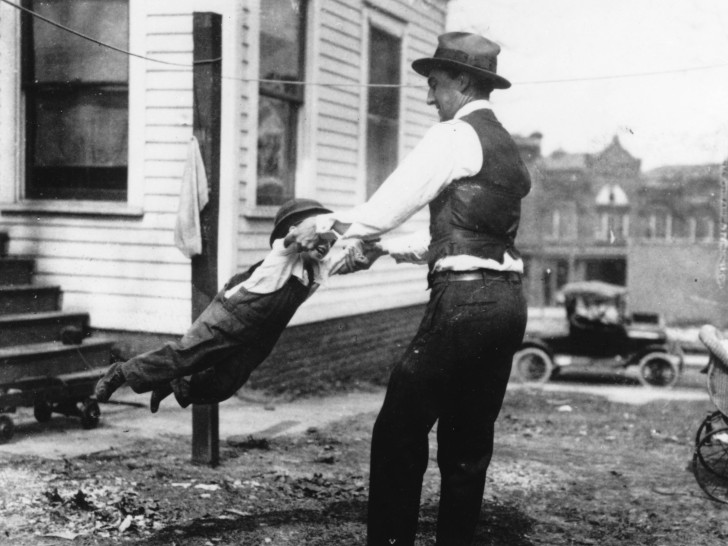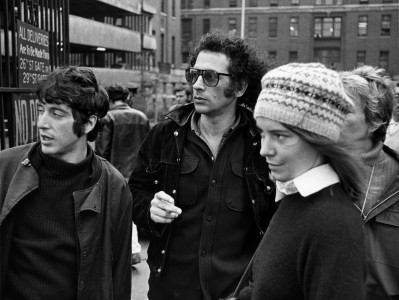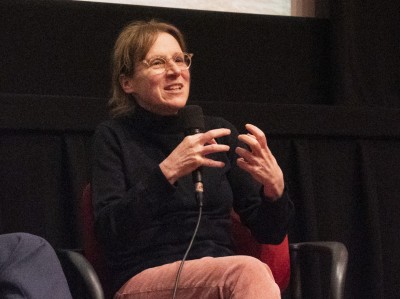
Moving Pictures: The Art of Jan Lenica and William Carlos Williams introduction by Haden Guest and Jill Janows.
Transcript
Haden Guest 0:00
[AUDIO MISSING] ...spring. But it's great to be inside and especially for this wonderful program that we have tonight, which is a centerpiece of our tribute and exploration of the films of Richard P. Rogers. This series was inspired by the presence here at Harvard this semester of celebrated photographer Susan Meiselas who is with us this afternoon and will be introducing this evening's program. She also assembled the wonderful jewelbox of a photography exhibition of Richard P. Rogers images. And she'll be speaking about that before the 7pm screening, so I encourage you to stay.
This afternoon we're going to see two films by Richard P. Rogers. They're both portrait films of sorts, and they reveal different aspects of Rogers filmmaking career, and when I say “directed by Richard Rogers,” in the case of the William Carlos Williams film from 1988, a sort of special comment needs to be made here because in fact, this was a work done for television. And it was a work done for a really pioneering series called Voices & Visions, which was on PBS, and which was focused on American poets. And this is a series that was conceived by a number of people but one of the central figures of the series—and of this episode in particular—is with us this afternoon, and she'll be saying a few words to describe more precisely than has been before exactly… what exactly was Dick Rogers’ role. And I’m speaking, of course, of Jill Janows, who was producer, writer, and researcher of the William Carlos Williams episode and a producer as well of the entire series. It was Jill Janows who hired Dick Rogers to direct the film only after she had conceived the film’s structure, selected the poems to be included, and devised many of its most impressive and important sequences. So you can see that attributing authorship to television works is often much more complex and subtle than it is when we're talking about film works as, for instance, the Jan Lenica film, Moving Pictures: The Art of Jan Lenica from 1975. That too, though, I would say is a collaboration between Lenica, who is the celebrated Polish animator—we had a retrospective of his work last in December—who was teaching here at Harvard, when Rogers decided to make this portrait, and as you'll see, it features Lenica’s animation, as well as I think Lenica’s imagination helps structure that film. So I would say that's also a collaboration. The two films will play back-to-back without interruption, there'll be just a short period before the seven o'clock screening, so you have absolutely no excuse not to stay for that, and there'll be a reception after the 7pm screening. So that's yet another reason to join us as well for that screening. Please turn off any cell phones, electronic devices that you have. And now with no further ado, please join me in welcoming Jill Janows.
[APPLAUSE]
Jill Janows 3:27
It was a wonderful gift and a privilege for me to work with Dick on the William Carlos Williams film. I want to explain briefly some background and the context for our collaboration, and then tell you about Dick's contribution as director. When I met Dick in 1985, I was not an experienced filmmaker, let alone a gifted or brilliant one like Dick. At the time, I was working for the New York Center for Visual History, a small nonprofit, independent film company in Manhattan, headed by executive producer Lawrence Pitkethly, and at the time, we were producing Voices & Visions, a series for PBS consisting of thirteen one-hour documentary films—yes, they were films, shot on 16 millimeter—on modern American poetry and poets ranging from Walt Whitman and Emily Dickinson to Sylvia Plath and Robert Lowell and Langston Hughes. Lawrence had created the series and we were in the process of filming the documentaries, as they each got funded by the NEH, NEA, PBS, CPB, and some major foundations. Each film was unusual in that it was structured around the presentation and analysis of poems and poetry interwoven with biography and cultural and social history, and not biographies in the conventional sense. Each film was free to find its own form and aesthetic, depending on the poet, his or her poetic style, geographical settings, and the visual and sound archival material available in each case. For each film we chose a writer, producer, and director. And these roles could be filled by separate people or the same person.
I had come to the project not as a filmmaker really, but from a creative writing and academic humanities background. I had studied philosophy and art history in college, had an MFA in poetry. I had worked at WGBH in Boston, and I was a serious longtime lover, though not a practitioner, of cinema nurtured here in the 70s and 80s, going to the Orson Welles Cinema in Cambridge. At the time, I was also studying screenwriting in New York and working with a playwright in a small intense group of people that met once a week for several years. For Voices and Visions, it ended up that I was the one who researched and wrote the NEH grant and the script for the Williams film, and I became the writer/producer. And I had just had my first real producing experience producing our film on Emily Dickinson, which involved a lot of dramatic recreations which are relevant to the Williams film.
I don't remember how but somehow Lawrence Pitkethly knew about Dick and Dick had somehow applied to direct one of our poetry films. I don't know how he heard about the center. I remember screening Dick's work, and especially loving Quarry, for what I perceive to be its poetic and its visual sensibility. And that's really how I chose Dick, who had never met, to direct the Williams film. I was, of course, incredibly intimidated by Dick when we met and very grateful that he was patient with me, given my own novice filmmaking experience. It helped that I had the literary expertise and knew everything about Williams, a poet Dick was not really familiar with in the beginning. Dick and I ended up spending many hours over a period of weeks and months, discussing Williams' life and work and working on the script that I had initially written. And I had conceived the film in metaphoric terms as a collage which mixed a variety of film styles to embody Williams’ work, a kind of modernist style for the documentary. And I just recently at home was searching and I actually unearthed our third draft of a script that we wrote together in 1986. I had also written dramatic and emotional storylines, to convey the themes and the tensions in Williams’ life and work, and I had chosen the poems and the talking heads who I interviewed on camera, and we very much wanted to create a narrative with no omniscient narrator. It was Dick, who took all these ideas and all this material, and who is the director and also one of the cinematographers—there were several wonderful ones who transformed all of this into a documentary work of art, I think.
I learned so much from him, and I just want to mention some of the highlights of his directing, in no particular order. One of my favorite scenes at the end of the film is a single Steadicam shot, shot by someone named Larry McConkey, who you may know, who ended up shooting the famous Copa scene in Scorsese's film Goodfellas. It's a single shot that lasts for several minutes through an abandoned hospital, and Dick completely designed and directed this incredible shot. He supervised the film editing done by his former student, Corey Shaff, a student at SUNY Purchase. We had to interweave all these different narrative strands. We had to interweave poet, poetry, and poetic presentation, we had to interweave biography, cultural history, all kinds of elements, and Dick did a magnificent job creating a coherent whole from all these different pieces. They're gorgeous. You'll see elegant tracking shots and beautiful landscape imagery shot by Dick. He also directed a beautiful scene I love with Allen Ginsberg who is a devotee of Williams and who was a protege of William Carlos Williams. They were both from New Jersey and, it was Dick’s idea to take Allen Ginsberg back to New Jersey and walk with him through Paterson, New Jersey, which was Ginsburg's hometown and also Williams’. That was Dick’s idea.
We also had animation in the film, I wanted animation about poems, but I had no idea how one would ever do that. And Dick chose George Griffin and Maureen Selwood, wonderful animators in New York, and directed these beautiful animation sequences that they created for the poems. Finally, I'll just mention one other thing: we had a very interesting... We wanted a kind of modern score, and Dick, I think, knew or chose Martin Bresnick, a Yale professor and composer and I think the score works very beautifully with the film. I also just want to finally close and say that I think Dick embraced the project and the formal and visual challenges and possibilities, because he had an affinity for the themes and tensions in Williams' work. It resonated a great deal for him, and I think you'll find that in the film. Also, finally, the project gave Dick an opportunity, a kind of permission to transition from his verité background into incorporating invention and fiction into documentary as the subject matter justified. So I'd like to end with a quote, saying that all these years later, I hope you find the film still resonant, informative, and moving. And I think there's a quote in the film from Williams that, to me, speaks very much to Dick's own work. Williams said, “You can by arranging the words, make a poem out of anything, because the purpose of the artist, whatever he is, is to take the life that he sees and raise it, raise it up to an elevated position where it has dignity.” Thank you.
[APPLAUSE]
© Harvard Film Archive
Related film series
Explore more conversations
Agnès Varda

Jerry Schatzberg

Laura Frahm

Kelly Reichardt

